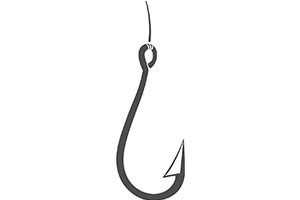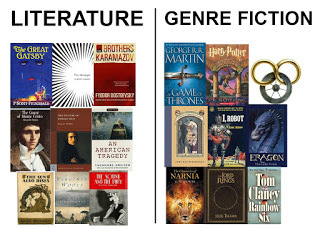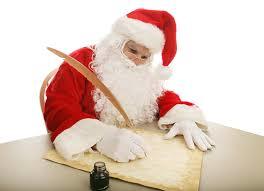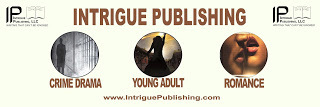Austin S. Camacho's Blog, page 4
February 5, 2019
What Do You Mean, Where's the Hook??
 One of the first pieces of advice most fiction writers hear is that they need to start their story with a good hook. Almost no one will disagree, but there are a couple of problems. One is that not everyone thinks of the same thing when they say “a good hook.” It’s also true that there really is more than one kind of hook in a story.
One of the first pieces of advice most fiction writers hear is that they need to start their story with a good hook. Almost no one will disagree, but there are a couple of problems. One is that not everyone thinks of the same thing when they say “a good hook.” It’s also true that there really is more than one kind of hook in a story.If you’re telling me about your novel and I ask you, “What is the hook?” I’m thinking of he big idea that will grab people’s attention and make them think they might want to read it. This might sometimes be called the high concept. It might be something like, “a guy finds a way to bring dinosaurs back to life” or “Two brothers travel the country hunting monsters.” Many of us don’t need to know anything about the plots to know we want to read or watch those stories.
But if your story is written and I’m critiquing it, “What’s the hook?” might refer to the opening scene. This isn’t about revealing the whole big idea of the book. It’s about some action in those first few paragraphs that pulls readers in right away and makes them want to know what’s going to happen next. And don’t worry, if you don’t write thrillers. This hook doesn’t have to be about people in jeopardy or set up a huge cliffhanger. A really clever puzzle can work well, since readers don’t know your characters yet. Or if you have a strong, interesting voice the writing itself can be the hook. Check out the first page of Moby Dick.
Separately, your key scenes should each have a hook. Some would say every scene but I think that’s excessive. But pivotal scenes must always give the reader a good reason to keep reading. One way is to pose a narrative question that the reader will want the answer to. You can present a plan and make readers want to know how they will unfold. Create tension that makes readers want to know how a situation will turn out. Hint at a secret, or give them reason to wonder if certain characters will get along when they meet.
It is also possible to present individual lines that are hooks. That could be just one sentence that grabs a reader’s attention. They can be funny (as in most James Bond movies) or punchy (Jeff Goldblum’s “must go faster” in Jurassic Park) or alerts that something’s going to happen (Harrison Ford’s “I got a bad feeling about this” in Star Wars.
So try to use ALL the hooks available to grab your readers, and when discussing your work, know which sort of hook you’re talking about.
Published on February 05, 2019 15:24
January 20, 2019
Book too Short? Pt II
 Last week I offered some help for a good novel that just doesn’t have enough words to attract a publisher. A too-short novel can be a troublesome animal, but you can get that word count where you want it to be with a little creative thinking. When look at your manuscript anew, start at the beginning. Of course if the opening is working, you might not want to mess with it, but you also might be able to further flesh out the set up or mirror something about the ending. Sometimes beginnings kick off too quickly. You can probably slow things down a little without hurting the story. Next, check the ending. Maybe there's more to wrapping up the story than you thought. Look for any loose ends or situations you referenced but never followed up on. Subplots that are wrapped up near the climax are good candidates for places to add a step or two, or to make those storylines a little more complicated.Good novels always have ups and downs in he middle. So look at any situation in which your hero might have won a battle a bit too easily. Think about ways to make your hero fail at that point, or to make them struggle a bit more for that hard-won victory. Not only would that take more writing to lay it out, but a failure where you once had a success would probably cause you to write an additional scene or two.If your story includes an obstacle that is there just to slow the hero down It might not be moving the story along. Your story doesn’t need such delaying tactics. This is really a weak point in your work and, as it happens, this could be a good place to add words. You can make this obstacle do more than just stall the protagonist by adding to, or increasing, the stakes. Make changes so that the outcome matters, and let it create a change in your hero.
Last week I offered some help for a good novel that just doesn’t have enough words to attract a publisher. A too-short novel can be a troublesome animal, but you can get that word count where you want it to be with a little creative thinking. When look at your manuscript anew, start at the beginning. Of course if the opening is working, you might not want to mess with it, but you also might be able to further flesh out the set up or mirror something about the ending. Sometimes beginnings kick off too quickly. You can probably slow things down a little without hurting the story. Next, check the ending. Maybe there's more to wrapping up the story than you thought. Look for any loose ends or situations you referenced but never followed up on. Subplots that are wrapped up near the climax are good candidates for places to add a step or two, or to make those storylines a little more complicated.Good novels always have ups and downs in he middle. So look at any situation in which your hero might have won a battle a bit too easily. Think about ways to make your hero fail at that point, or to make them struggle a bit more for that hard-won victory. Not only would that take more writing to lay it out, but a failure where you once had a success would probably cause you to write an additional scene or two.If your story includes an obstacle that is there just to slow the hero down It might not be moving the story along. Your story doesn’t need such delaying tactics. This is really a weak point in your work and, as it happens, this could be a good place to add words. You can make this obstacle do more than just stall the protagonist by adding to, or increasing, the stakes. Make changes so that the outcome matters, and let it create a change in your hero.After all of that, consider what you can do with your stronger secondary characters. One of them might benefit from a character arc of their own. That would prompt you to add smaller subplots or extra layers in existing scenes. Those characters could be used to show another side of the problem, or mirror the choices the hero makes. Or this character might face their own problems that could interfere with the protagonist’s objectives.So if your new novel is too short for publishers’ guidelines, don’t just stretch it – make it better!
Published on January 20, 2019 15:10
January 13, 2019
Book too short? Here's the Cure
 More and more often, Intrigue Publishing receives well written manuscripts that don’t fit our submission guidelines. For example, we have found that, Y-A books aside, we do not do well with novels shorter than 80,000 words. Sometimes the prose is so strong and the story is so good that we return the manuscript and ask the author to expand it to a more marketable length. If your books is already well written (a solid plot, good writing, good subplots) this can be a real challenge. Just cramming in more stuff can make a good books worse. So what is an author to do?
More and more often, Intrigue Publishing receives well written manuscripts that don’t fit our submission guidelines. For example, we have found that, Y-A books aside, we do not do well with novels shorter than 80,000 words. Sometimes the prose is so strong and the story is so good that we return the manuscript and ask the author to expand it to a more marketable length. If your books is already well written (a solid plot, good writing, good subplots) this can be a real challenge. Just cramming in more stuff can make a good books worse. So what is an author to do?In my own manuscripts I’ve found that I can actually If that doesn’t get you to the desired length you may have to add an entire scene or two. You have to be careful here. You don’t want to add a scene that feels like it was shoved in. It needs to serve the story and not disrupt the pacing. In the genres I write, it usually calls for introducing an additional challenge for the hero to face, and a scene where he overcomes it.
But we may be getting ahead of ourselves. If you’re an outliner like me you should first take a close look at the book’s structure. You may find that the beginning is too short, or there’s not enough happening in the middle. This process may highlight the perfect place to add a scene and fix the problem. Some places are easier to add than others.
Look at your major plot points. You have to have several steps to get to them, right? So maybe you can add one more step without hurting the pacing. Odds are you won't find it in act one. Usually there is only one inciting event that triggers the novel's core conflict. Act two is where you put most of the book’s turning points. The middle of the novel should be all about the protagonist trying and failing. You might be able to add a scene or two, or even whole chapters, without hurting the flow of the story.
Of course, you don’t want to add a step in your story that delays the plot. One safe thought is to look closely at your theme and your character arcs. Look for a situation that presents a plot obstacle AND a character issue. Or perhaps a new obstacle plus a thematic illustration. Reread your ending and see if you can add something to the middle of the book, an earlier failure that will make a later moment more poignant.
I’ll have more suggestions for filling out a too-short novel. Next week.
Published on January 13, 2019 17:25
December 30, 2018
Is Your Fiction Literary?
 At Intrigue Publishing we handle pretty specific genres of fiction: crime fiction in all its forms, Young Adult (or you might say New Adult) and romance. We’re clear in our submission guidelines that we do not publish literary fiction. And yet, we regularly receive submissions that fall into that category. I’ve decided that maybe different writers mean different things when they discuss those categories. “There’s a murder in my story” does not automatically mean it’s right for us. After all, To Kill A Mockingbird is definitely crime fiction, but it is also clearly literary work.
At Intrigue Publishing we handle pretty specific genres of fiction: crime fiction in all its forms, Young Adult (or you might say New Adult) and romance. We’re clear in our submission guidelines that we do not publish literary fiction. And yet, we regularly receive submissions that fall into that category. I’ve decided that maybe different writers mean different things when they discuss those categories. “There’s a murder in my story” does not automatically mean it’s right for us. After all, To Kill A Mockingbird is definitely crime fiction, but it is also clearly literary work.So, how do you know if your books is actually literary fiction? Here are three or four clues to look for.
Literary fiction tends to deal with broad ideas and big events. If you’re working more with the ideals an themes than day-to-day action, you’re probably working on something too literary for us. Sweeping social commentary about life in the Middle East? Probably literary. A story about a specific romance or an action-packed story about events impacting a couple of individuals trying to escape a terrorist attack? That’s more likely in our wheelhouse.
Pacing is also a clear giveaway. Genre fiction moves quickly from one plot point to the next. The entire story tends to take place over a fairly short period of time. So if your story takes place over generations, and you have a hard time pinning down the plot points, it may be too literary for us. Big romance may be an exception to this rule, but we also don’t want books over 100,000 words so they’d be cut out anyway.
The biggest difference may be that genre fiction is more plot driven, as opposed to character driven. A literary novel could be all about ideas, philosophies and themes. Genre novels are driven by the events. So ask yourself, how does the reader learn about my main characters? Is it through introspection and inner monologue? If so, you’re building a literary novel. If you learn about these people by watching what they do, the actions they take, the decisions they make, then you’re in the genre track.
So create strong characters, but force them into interesting, challenging events and keep the pace up! Then you’re ready to submit to Intrigue.
Published on December 30, 2018 17:17
December 24, 2018
Writing Holiday
 For many of us, writing is a discipline. We get up every day with a clear plan to write for a specified amount of time, or to add a predetermined number of words to our work in progress. And we have a sense that to make any kind of progress, it needs to happen every day of our lives.
For many of us, writing is a discipline. We get up every day with a clear plan to write for a specified amount of time, or to add a predetermined number of words to our work in progress. And we have a sense that to make any kind of progress, it needs to happen every day of our lives.But what happens at the time of the most popular holidays. In my house Christmas is a time when family members abandon their normal daily routines entirely and gather together for group activities. This could mean board games, watching specific movies together, or entertaining other people’s kids. Shopping, cleaning, and cooking take up more time than usual. So how do we get our writing done.
I’m unwilling to abandon my writing impulses just because of family gatherings. But I have choose to rearrange my plans for two weeks every year. Instead of crafting new paragraphs I designate this time for gathering the raw material from which I will craft the paragraphs of the future.
Great fiction needs great characters. If you’re surrounded by my family, and probably yours, you’re drowning in them. So I try to be in it, but not of it, if you know what I mean. I observe their behavior, their reactions to situations, and silently try to describe them in words. How would I tell someone of this facial expression. I know he looks disappointed / joyful / grateful / bored… but what words would I use to describe that look in my book. Plus, I register how people dress, hairstyles, accents, all the attributes good characters will have in my next novel.
I’m also capturing dialog. Different people use phrases and sentence structures I would not, but everyone understands them. I get to hear people using baby talk to the grandbabies, and speaking in a very different way to the oldest relatives.
And drama? There’s no end to it, and I get to see how those tense situations get started, even among loved ones, and how they get resolved. People in my fiction will find themselves in these situations too, and now I can express it realistically.
So yes, I’m still working at being a writer, even in the chaos of Christmas morning. By mentally recording these experiences, I improve my craft, even if I’m not actively writing.
Published on December 24, 2018 13:32
December 18, 2018
The Fall and Rise of Independent Bookstores
 When Amazon.com appeared in the mid 1990s I thought it would be the salvation of all authors. Bookstores in my area had little use for local authors and like the major publishers, seemed to only be chasing the blockbusters. In fact bookstores and big publishers seemed to be presenting a united front against local, unique or mid-list authors. Amazon appeared to be a force to level the playing field.
When Amazon.com appeared in the mid 1990s I thought it would be the salvation of all authors. Bookstores in my area had little use for local authors and like the major publishers, seemed to only be chasing the blockbusters. In fact bookstores and big publishers seemed to be presenting a united front against local, unique or mid-list authors. Amazon appeared to be a force to level the playing field.By the turn of the century, I feared that Amazon would be the death of all bookstores. People loved the new way to shop for books, prices were great, and ebooks were available for 99 cents or free. I watched many of the local independent bookstores that wouldn’t carry my books go under. According to the American Booksellers Association (ABA) the number of independent bookstores in the US dropped 43% from 1995 to 2000.
Then, in 2011, the number 2 book chain, Borders, collapsed, and number one, Barnes and Noble, appeared to be on the ropes. I feared the death of retail book selling.
But boy was I wrong. Right about that time, independent bookstores began to grow. Between 2009 and 2015 the store numbers in the US grew from 1651 to 2227, about 35%. Today the ABA reports 2407 locations, making it more like 50% growth since 2009.
One read of those statistics could be that Amazon wasn’t the danger at all, but rather that giants like Borders and Barnes and Noble were crushing the smaller brick and mortar stores. Maybe browsers who can’t find a store in the mall and don’t live near one of the few remaining B & N superstores have rediscovered smaller stores.
OR, maybe the owners of all those new stores have a different attitude. Independent bookstores I know are working to stress their ties to the local community, emphasizing how they are NOT like Barnes and Noble.
In that vein, they are curating their collections the way libraries do, offering personalized service to their customers by carrying the books their local readers want to read. Instead of just pushing the New York Times bestsellers, they are developing relationships with their customers so they can recommend what those individuals might want, particularly new writers customers haven’t found on their own.
I also notice that the “buy something or move on” attitude I used to see has been replaced with a “hang out here” mentality. To my delight they are hosting local author book signings. Some are also hosting book clubs and lectures, game nights, and reading groups for different ages. They are more of a public gathering place, replacing the bowling alley or skating rink some of us older guys remember as the place to meet our peeps.
Regardless of whether either of my theories is right, independent bookstores are back and that’s good news for up-and-coming writers, as well as for small presses like Intrigue Publishing who want to get their books on store shelves. So we have one thing to celebrate as this year winds up. The next challenge is to find the best way to take advantage of this good news in the new year.
Published on December 18, 2018 13:04
December 9, 2018
Marketing as you Write
 When I sit down to write a novel my mind is on plot structure, character development, pacing and dialog. Still, it would be smart to consider marketing even as we create our stories. It can help a lot after we finish a manuscript.
When I sit down to write a novel my mind is on plot structure, character development, pacing and dialog. Still, it would be smart to consider marketing even as we create our stories. It can help a lot after we finish a manuscript. For example, most stories can have a seasonal setting. For example, suppose your story is set in the Christmas season. Die Hard isn’t a holiday movie by any means, but because of the seasonal setting it gets a viewing boost every year about this time. The same could happen to your novel’s sales. That one might be obvious, but the same applies to a story set on Memorial Day, Independence Day, Valentine’s or even if the action is specifically set in mid-summer.
What if your significant character is handicapped in some way? Or maybe he or she is dealing with a significant illness like epilepsy or autism? Real life reader dealing with those situations are one specific audience you can target and, if you got it right, they will probably be happy to help you promote your book. Or maybe your heroine is dealing with spousal abuse. You probably had to do a lot of research to get those situations right. It’s reasonable to push your book in April (Sexual Abuse Awareness Month.) What if you’re writing about a military family. You can tie in to Veteran’s Day, Memorial Day and depending on your characters, perhaps Military Spouse Appreciation Day (its May 10th.)
And there are any number of minor holidays that you’ve never heard of. Google what you need and you’ll probably find something that relates to your characters. My own private eye protagonist, Hannibal Jones, is a fanatical coffee aficionado. Next year I’m planning a big push connected to International Coffee Day (September 29).
While you’re at it, think of other ways you could bring your characters to life. There are ideas that aren’t tied to a particular time or date. Is there a wedding in your book? Maybe wedding boards on Pinterest will get some attention. Is there a birth? You could have fun with a gender reveal. Maybe you’d enjoy interviewing some of your characters. Again, Hannibal Jones maintained a blog for a year, and I think that posts written by him got people involved with the character.
So stretch your imagination while you’re writing. In the back of your mind, consider what you can set up in the novel that will make promotion easier when the book comes out.
Published on December 09, 2018 16:40
December 5, 2018
Little Big Press
 Aside from being an author, I’m the editorial director of Intrigue Publishing, a small press in Maryland. Unlike bars, restaurants and car dealerships, people in our business make a clear distinction between “large” and “small” presses. It’s an uncomfortable but unavoidable label.
Aside from being an author, I’m the editorial director of Intrigue Publishing, a small press in Maryland. Unlike bars, restaurants and car dealerships, people in our business make a clear distinction between “large” and “small” presses. It’s an uncomfortable but unavoidable label.But what do we mean by small press anyway? To some people in the industry, it’s everyone except the “Big Six” publishers. Actually, they’re the big five now since Penguin Books merged with Random House. Their peers are Macmillan, Hachette, HarperCollins and Simon & Schuster.
But is that a fair place to draw the line? Kensington Publishing is a family run company, but they put out more than 500 titles a year and have a healthy handful of NY Times bestsellers in their stable. They have 85 employees and are the last remaining independent U.S. publisher of hardcover, trade AND mass market paperback books. Are they a small press?
By contrast, Intrigue Publishing is a four-person team that subcontracts some of the work of publishing. We have 21 talented authors working with us and are happy to release 6 titles each year. We are proud of the awards our authors have won, but we haven’t published a NY Times Bestseller yet. We aspire to do what the big guys do in order to be a legitimate publishing company, yet we strive to maintain a personal relationship with our writers and be an author friendly house like a small business.
So, running a small press is a one-way path to an identity crisis.
For example, when one of our authors gets ambitious and schedules a few events on their own without telling me, I’m happy for his or her success but I’m also thinking, “Wish I had known so I could set up a social media push. And don’t they know I need to coordinate with my distributor to make sure there are enough books in the right places in time?” In other words, I wish they treated us like partners.
On the other hand, when one of our authors asks for data on where his books have been sent, who has them in stock, and which stores have returned them, I think, “Would he be asking his editors this stuff if he was published by Random House?” In other words, I with they would treat me like a big publisher.
So, yes, an identity crisis, because we really want to be both things: a publisher that acts, and gets treated like, the big boys, while embracing our authors and treating them like individual who can talk to us anytime about anything. And in my heart, I hope I never stop reaching for both ends of that spectrum. Random House/Penguin is not who I want to be.
Although it wouldn’t bother me to be Kensington someday.
Published on December 05, 2018 12:30
November 28, 2018
Plotter AND Pantser?
 The last couple of weeks we’ve been talking about the writer’s choice of being a plotter (working from an outline) or a pantser (writing by the seat of your pants.) I should point out that neither of these approaches is an absolute. Right now I’m working on a novel using a kind of a hybrid approach. Yes there’s an outline but it is very rudimentary compared to what I usually do. It’s only nine pages long, and I’m making up scenes as I go to hit the broad strokes, the high points laid out in that bare bones outline.
The last couple of weeks we’ve been talking about the writer’s choice of being a plotter (working from an outline) or a pantser (writing by the seat of your pants.) I should point out that neither of these approaches is an absolute. Right now I’m working on a novel using a kind of a hybrid approach. Yes there’s an outline but it is very rudimentary compared to what I usually do. It’s only nine pages long, and I’m making up scenes as I go to hit the broad strokes, the high points laid out in that bare bones outline.Full disclosure: that nine pages of outline includes a character list. Even if I don’t know everything that’s going to happen in my story I need to know the players. I would hate to have to stop writing when a character is introduced to figure out who this guy is and how he’s going to behave. I need to know a lot about my characters, way more than I ever tell the reader. The character’s name had to come from someplace, and it says a lot about his background. I suppose if you’re a true pantser you can have people just appear and learn about them as you go, accepting that they may be a bit unpredictable.
But as I’ve shown you, there are real plusses and minuses to both approaches. And at the end of the day, you have to accomplish certain things no matter what, if your story is to be a success. Which approach suits your style really all depends on what order you do these things in.
Just remember that no matter how you write, it’s not a story without conflict. Regardless of the genre you like to write in, even if you write literary or mainstream fiction, conflict is what makes it worth reading. Conflict drives your story forward. That doesn’t have to mean a fight. Conflict is not violence. But it is the motivation for the protagonist and antagonist and whether you plan out how they’ll oppose each other in advance, it’s the pivotal point that is needed no matter how you approach writing.
Published on November 28, 2018 10:20
November 20, 2018
Plotter or Pantser - Which is Better
 Last week I showed you how the plotter approach and the pantser approach to writing can take an author to the same story. It really all depends on the writer’s process and their comfort zones. The pantser is open to new events the whole time he’s writing. He trusts the characters to lead him down an interesting and exciting path. If they don’t he can throw an obstacle in the hero’s way to make it exciting or just “drop a body” he’s writing a mystery.
Last week I showed you how the plotter approach and the pantser approach to writing can take an author to the same story. It really all depends on the writer’s process and their comfort zones. The pantser is open to new events the whole time he’s writing. He trusts the characters to lead him down an interesting and exciting path. If they don’t he can throw an obstacle in the hero’s way to make it exciting or just “drop a body” he’s writing a mystery. But what if the storyline doesn’t lend itself to such an event? What happens when there’s a lull in the proceedings and the author has written himself into a situation where he really doesn’t know what happens next? The characters aren’t pushing in one direction or another and 40 thousand words into a novel he finds that there doesn’t seem to be anything exciting or fun around the corner?
We call this condition writer’s block and it is one of the potential dangers of writing as a pantser. Maybe three chapters back your story took a hard left and now you can see that a right would have led you to a much more satisfying place, plot-wise. You could be permanently stuck. Or you may decide that the only rational course of action is to (gulp) delete the last three chapters and start over writing from there.
As a plotter, I am virtually immune to writers block. My outline is a clearly stated series of scenes, one leading smoothly into the next. When I finish writing one scene I just look at my outline and begin the next one. I know where I’m going and I have a reliable road map to get there.
But characters develop in the writing. The more you say about them the more you know about them. They develop depth and dimension. And you wrote this outline months ago, before you realized that the cop’s wife would be this kind of courageous troublemaker. Back when the secondary villain was pretty much a blank with no real motivations of his own.
So now, 40 thousand words into your novel, a new idea occurs to you. A truly great idea. But an idea that won’t work in the outline as it exists now. And you’re faced with a painful choice. You either carry on with the story you have in mind, knowing it’s not as good as the alternate universe you just thought up, or…. You delete the last three chapters, make that right turn instead of the left, and then build an outline out from there, forward to the big finish you already conceived. The ending won’t change, but the path to get there is quite different.
The point is, there’s no real advantage to one style over the other aside from the writer’s comfort zone. Next week we’ll consider an alternative to being a plotter OR a pantser.
Published on November 20, 2018 11:41



